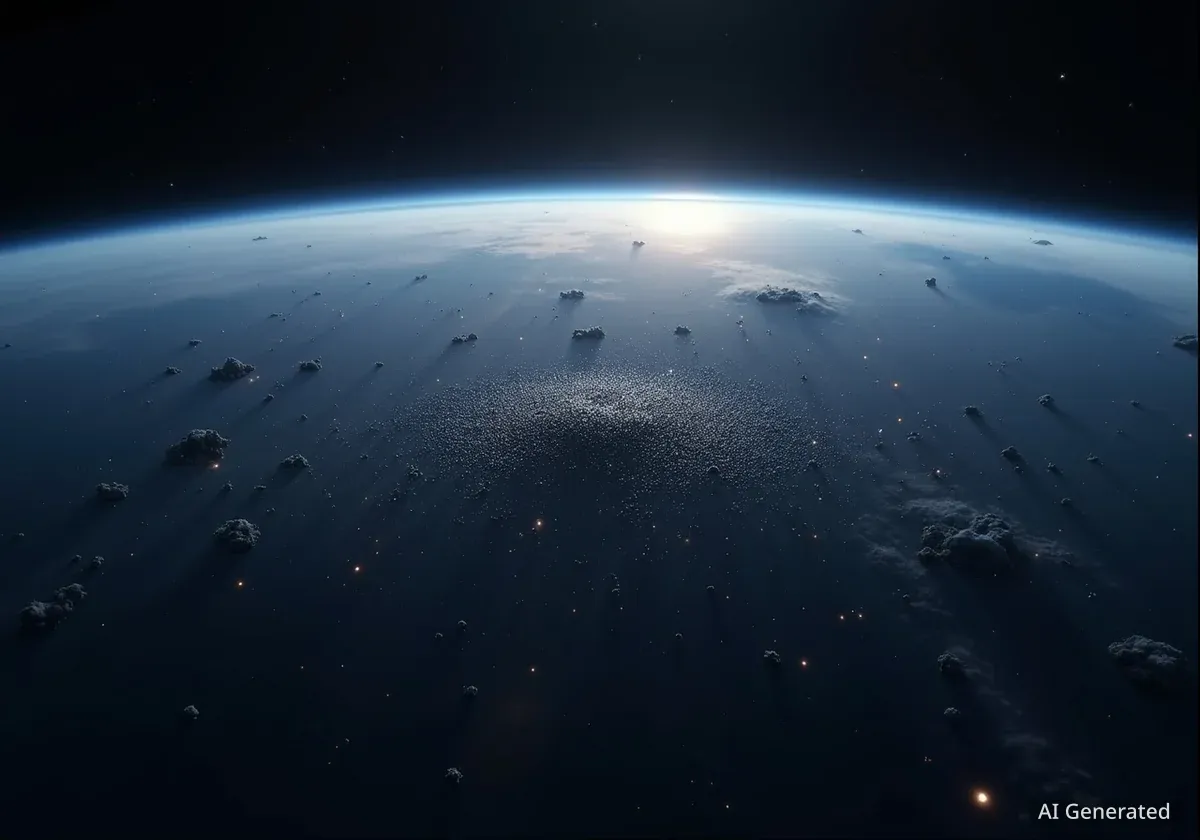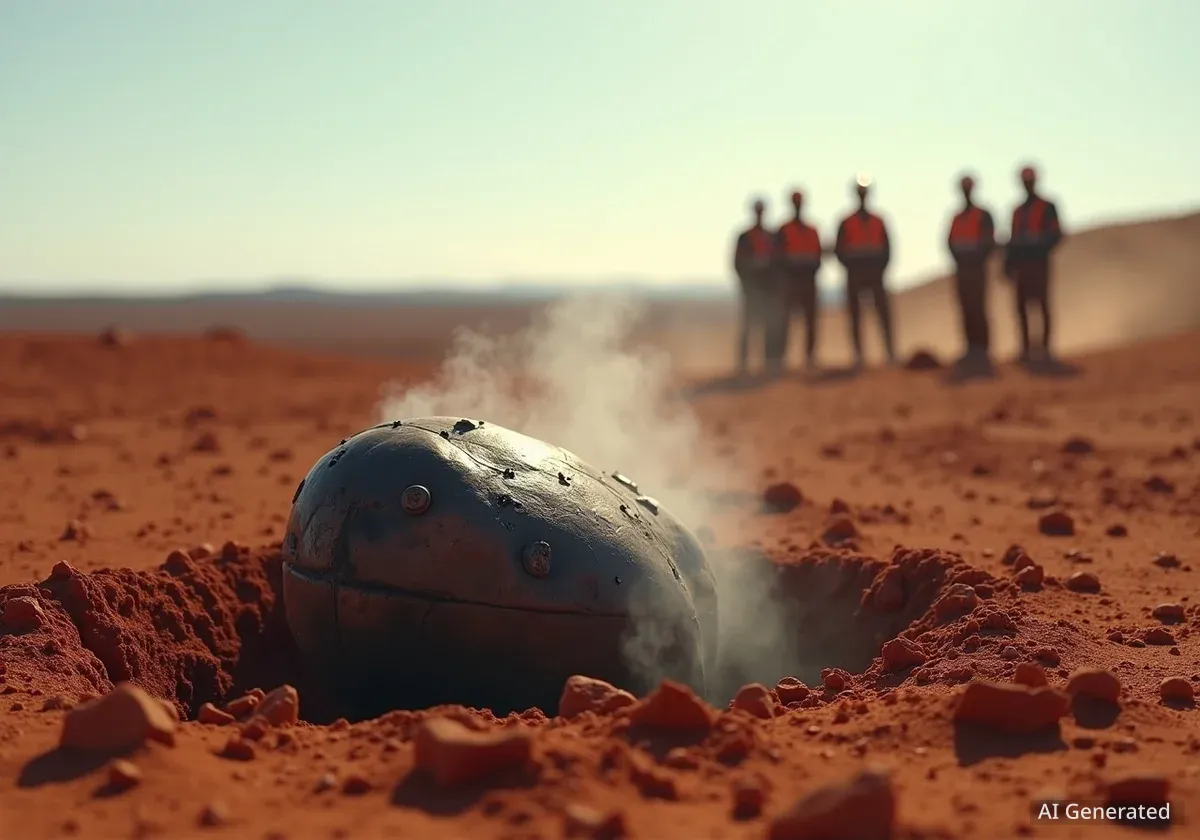The risk of debris from satellites and rockets falling to Earth is increasing as low-Earth orbit becomes more congested. A recent incident involving a half-ton piece of a 50-year-old Soviet rocket highlights the growing danger of uncontrolled reentries, a problem compounded by a lack of modern international regulations for space traffic management.
With thousands of new satellites being launched for mega-constellations like SpaceX's Starlink, experts warn that it is only a matter of time before a significant piece of space junk strikes a populated area. The international treaties governing liability for such events are decades old and ill-equipped to handle the complexities of the modern commercial space age.
Key Takeaways
- The number of objects in low-Earth orbit has surged, largely due to commercial satellite constellations.
- Uncontrolled reentries of large debris, like rocket stages, are becoming more common, with recent incidents involving Chinese rockets.
- Current international space treaties, written in the 1960s and 1970s, are inadequate for managing modern space traffic and assigning liability.
- There is no global system for coordinating space traffic, leaving collision avoidance and deorbiting procedures largely unregulated.
A Crowded Sky Above
The space surrounding our planet is becoming increasingly crowded. For decades, the number of objects in orbit grew at a steady pace. However, in the last five years, that number has skyrocketed. This surge is primarily driven by the deployment of large-scale satellite constellations, often called mega-constellations.
Companies like SpaceX are leading this trend with its Starlink internet service, which currently operates more than 8,000 satellites in low-Earth orbit (LEO). The company has plans to expand this network to as many as 42,000 satellites. Other major players, including Amazon and state-backed Chinese companies, are also developing their own constellations, promising to add tens of thousands more objects to an already congested environment.
Orbit by the Numbers
According to the European Space Agency, there are currently around 20,000 tracked objects in LEO. SpaceX's Starlink satellites already perform tens of thousands of collision avoidance maneuvers each year to prevent crashes with other objects.
As astrophysicist Jonathan McDowell told EarthSky, debris the size of meteors has been falling back to Earth for the past 60 years. He noted that luck has been the primary factor in preventing these objects from hitting populated areas. With the exponential increase in orbital objects, relying on luck is becoming an increasingly risky strategy.
The Danger of Uncontrolled Reentry
Most modern satellites are designed with a limited lifespan, typically around five years. At the end of their service, they are often maneuvered into a lower orbit where atmospheric drag can pull them down, causing them to burn up harmlessly upon reentry. This is known as a controlled deorbit.
However, problems arise when satellites malfunction, run out of fuel, or were never designed for controlled reentry in the first place. These objects eventually fall back to Earth in an uncontrolled manner, and their exact landing spot is impossible to predict.
A Soviet Relic Falls to Earth
In May 2025, a stark reminder of this danger occurred when a large piece of the Soviet spacecraft Cosmos 482 reentered the atmosphere. Launched in 1972 on a failed mission to Venus, the half-ton object spent over 50 years circling the Earth before its orbit finally decayed. While it is believed to have crashed somewhere near Indonesia, its precise impact location remains unknown.
More recent examples involve larger objects. China has launched powerful Long March rockets that have resulted in 20-ton core stages making uncontrolled reentries. In separate incidents, debris from these rockets has landed in Borneo and West Africa. In both cases, populated centers were narrowly missed.
Outdated Treaties in a New Space Age
The legal framework governing space activities was established at the dawn of the space age and has not kept pace with modern developments. The two cornerstone agreements are the Outer Space Treaty of 1967 and the Liability Convention of 1972.
A recent article in the journal npj Space Exploration highlighted the shortcomings of these decades-old rules. The authors explained the core principles of the existing framework:
"The Outer Space Treaty of 1967 holds launching states responsible for any harm caused by their space activities, whether from debris, malfunctioning satellites, or uncontrolled reentry. The Liability Convention of 1972 further specifies that any damage to another country by space objects requires compensation from the responsible state."
While these principles seem straightforward, applying them today is complicated. For instance, if the Cosmos 482 debris had caused damage, a country like Indonesia would face the difficult task of seeking compensation from modern Russia for an object launched by the long-defunct Soviet Union. Furthermore, financial compensation offers little comfort in the face of a potential catastrophe, such as a multi-ton object striking a dense urban area.
The Lack of Global Coordination
A significant gap in the current system is the absence of a formal, international body for space traffic management. While the U.S. Space Force tracks objects and can issue collision warnings, it has no authority to compel satellite operators to act.
The United States had begun developing a civil service called the Traffic Coordination System for Space, but the program has faced budget cuts, leaving its future uncertain. Without a centralized system to coordinate the movements of tens of thousands of satellites operated by different countries and private companies, the risk of in-orbit collisions and subsequent debris creation continues to grow.
A collision in orbit could create a cascade of new debris, a scenario known as the Kessler syndrome, which could render certain orbits unusable for generations. This not only increases the risk of objects falling to Earth but also threatens the critical satellite infrastructure we rely on for communication, navigation, and scientific research.
Urgent Need for Modern Regulations
The rapid commercialization of space has created a new reality that the architects of international space law could not have foreseen. The sheer volume of planned satellites, combined with the lack of binding international rules for deorbiting and traffic management, has created a situation that experts say is unsustainable.
As the number of uncontrolled reentries inevitably rises, the probability of a major incident on the ground increases with each launch. Analysts and scientists are calling for a renewed international effort to establish a modern framework for space governance. This would include:
- Mandatory deorbiting standards for all new satellites.
- A global space traffic coordination system to prevent collisions.
- Clearer rules of liability that account for private companies and international partnerships.
- Technologies for active debris removal to begin cleaning up existing space junk.
Without proactive measures, the global community is simply waiting for a disaster to force a change in policy. The hope is that governments and private industry will collaborate to create new rules for this new space age before luck runs out.





